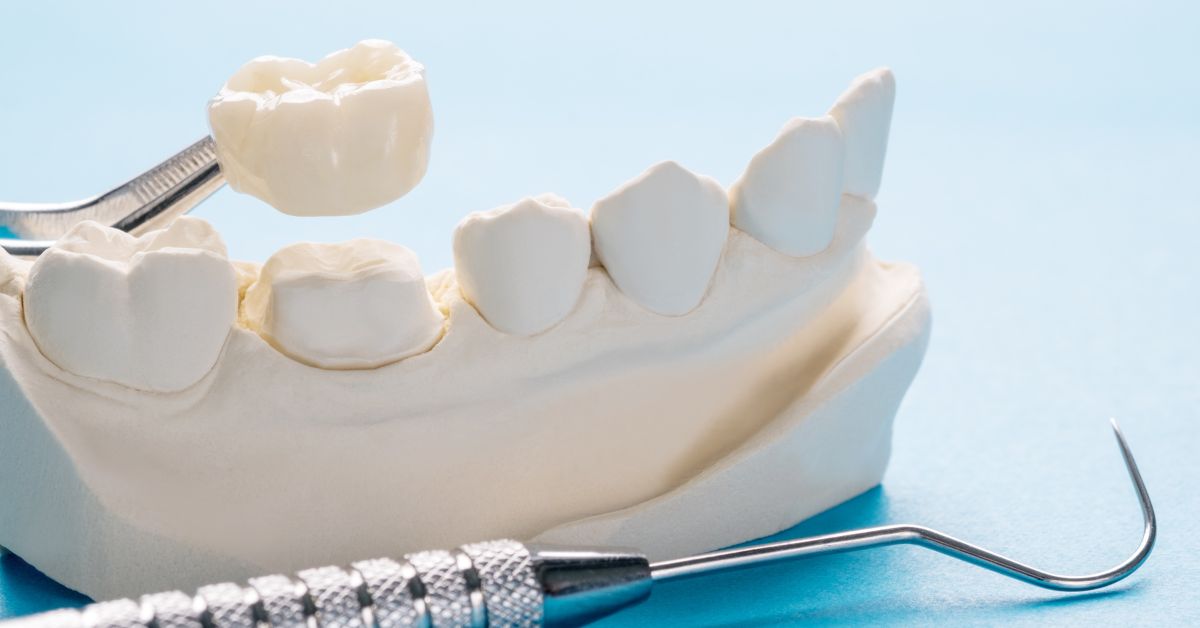Dental crowns are a common and essential dental procedure, used to restore teeth that are decayed, cracked, or otherwise damaged. While the purpose of a dental crown is straightforward – to protect and restore a tooth’s function – one question often arises: Why is a dental crown so expensive?
The cost of dental crowns can range anywhere from $800 to $3,000 per tooth, depending on various factors. The high price tag of dental crowns might seem daunting for patients, especially when they are not entirely sure why the procedure costs so much. In this comprehensive guide, we will delve into the main reasons that contribute to the steep costs of dental crowns and offer strategies for managing the financial impact.
From the materials used in the crowns to the expertise of the dentist and location of the dental practice, we will cover all the elements that factor into the pricing. Whether you’re considering a dental crown for yourself or just curious about the process, this article will give you a full understanding of why dental crowns are priced the way they are and what you can do about it.
Why is a Dental Crown So Expensive? Understanding the Key Factors
When considering the cost of a dental crown, there are several significant factors that influence the price. These include the type of material used, the complexity of the procedure, the expertise of the dentist, and the technology involved in the creation of the crown. Let’s explore these factors in more detail to understand why crowns can be so costly.
The Materials Matter: What Type of Crown is Right for You?
The material used in the creation of a dental crown plays one of the most significant roles in determining its cost. Different materials offer various benefits in terms of durability, aesthetics, and cost-effectiveness. Here are some of the most common types of dental crowns:
Porcelain Crowns
Porcelain crowns are often the most expensive type due to their high aesthetic value. These crowns are designed to mimic the natural look of your teeth, making them a great option for those who want a natural, seamless smile. However, porcelain crowns require advanced technology and highly skilled professionals to create, which increases the overall cost.
-
Aesthetic Appeal: The porcelain material is highly translucent, giving it the ability to blend in with your natural teeth.
-
Durability: Although porcelain is durable, it’s more prone to chipping than metal crowns, which may be a concern for patients who need more long-lasting options.
-
Labor-Intensive Creation: Porcelain crowns are often handcrafted and require precision to ensure that they fit perfectly, contributing to their high price.
Metal Crowns
Metal crowns, often made from gold, are among the most durable types of crowns. However, they come with a higher price tag because of the precious metals used in their construction.
-
Gold Crowns: Known for their strength and durability, gold crowns can last 20 years or more. They are highly resistant to wear and tear, making them an excellent choice for back teeth that undergo heavy chewing forces.
-
Other Metals: Some crowns are made from non-precious alloys or a combination of metals, which can help reduce costs but still provide a high level of durability.
Try Our Dental Calculators
| Dental Procedure Cost Estimator | Dental Implant Cost Calculator |
|---|
Porcelain-Fused-to-Metal Crowns
This type of crown combines the strength of metal with the aesthetic qualities of porcelain. These crowns are typically more affordable than full porcelain crowns, but they still carry a significant price due to the labor involved in creating them and the need for both metal and porcelain materials.
Dental Expertise and the Dentist’s Skill Set
The cost of a dental crown is not just about materials, but also about the skill and experience of the dentist performing the procedure. A dentist who specializes in cosmetic dentistry or restorative procedures often charges more because of their advanced skills and the time spent on the procedure.
Time and Precision
Placing a dental crown is a time-intensive procedure that requires precision and care. The dentist must take impressions of the tooth, prepare the tooth to fit the crown, and ensure that the crown fits perfectly before bonding it in place. A skilled dentist who ensures that the crown fits perfectly without discomfort or complications will charge more for their expertise.
-
Experience and Training: A highly experienced dentist with years of training in crowns will often charge higher fees due to their expertise and the quality of their work.
-
Complicated Cases: If the case is more complex, such as a root canal or the need for a full mouth restoration, the costs will naturally rise.
Dental Laboratory Costs: The Hidden Expense
The creation of a dental crown involves more than just the dentist’s expertise. A dental lab must create the crown based on the specifications provided by the dentist. These labs employ skilled technicians who craft the crowns by hand or using advanced technology, such as CAD/CAM systems.
-
Laboratory Fees: Dental labs charge dentists for their services, which can increase the overall cost of the crown. These fees are passed on to the patient.
-
CAD/CAM Technology: Modern technology, like CAD/CAM, allows for precision crafting of crowns, but it comes with its own costs. While CAD/CAM systems improve accuracy and reduce chair time for patients, they also require substantial investment by the dental lab, contributing to higher costs.
Location of the Dental Practice: How Geography Affects Pricing
Just as with any other service, the location of the dental practice plays a significant role in the price of dental crowns. Dentists in larger cities or high-cost-of-living areas will often charge more due to increased overhead costs, such as rent, utilities, and employee wages.
Urban vs. Rural Practices
-
Urban Areas: Dentists in urban areas often charge more for their services because of the higher operational costs in these regions. The higher the cost of living, the higher the price you can expect to pay for dental procedures like crowns.
-
Rural Practices: On the other hand, dental offices in rural areas may offer crowns at a lower price, as their overhead costs tend to be lower. However, the expertise of dentists in these areas may vary, so it’s important to consider both cost and quality.
Why Dental Crowns Are a Long-Term Investment
While the upfront cost of a dental crown may seem high, it is important to recognize the value that these crowns offer in terms of durability, functionality, and aesthetic improvement.
Restoring Function and Appearance
Dental crowns are designed to restore the function of a damaged tooth and improve its appearance. When a tooth is cracked or severely decayed, a crown can protect it from further damage and preserve its function for many years. Without a crown, the tooth may deteriorate further, leading to the need for more expensive treatments down the road, such as a root canal or even tooth extraction.
How to Manage the Cost of a Dental Crown
Given the potential costs associated with dental crowns, many patients seek ways to manage the expense. Here are some practical tips for managing the costs of dental crowns:
-
Dental Insurance: Many dental insurance plans offer coverage for crowns, but it’s important to understand the specifics of your policy. Typically, dental insurance covers a portion of the cost, but it may not cover the full amount.
-
Payment Plans: Many dental offices offer financing or payment plans, allowing you to pay for your dental crown over time. This can help make the procedure more affordable.
-
Dental Schools: If you’re looking to save money, consider visiting a dental school where students perform procedures under the supervision of experienced instructors. These treatments are often offered at a lower cost.
-
Shop Around: It’s always a good idea to get multiple quotes from different dental offices to compare prices. Different dentists may offer varying rates for the same procedure.
Frequently Asked Questions (FAQs)
Why are porcelain crowns so expensive?
Porcelain crowns are expensive because of the high-quality material and the intricate craftsmanship required to create them. Additionally, they offer superior aesthetic value, which increases their cost.
Are gold crowns cheaper than porcelain crowns?
Gold crowns tend to be more expensive than porcelain crowns because of the cost of the gold material. However, gold crowns are extremely durable and can last much longer than porcelain crowns.
How long do dental crowns last?
Dental crowns typically last between 5 and 15 years, depending on the material used and how well the crown is cared for. Metal crowns tend to last longer than porcelain crowns.
Can dental crowns be covered by insurance?
Yes, many dental insurance plans cover a portion of the cost of crowns. However, the coverage varies, and it is important to check your policy to understand what is covered.
Are there any affordable alternatives to dental crowns?
Resin crowns and dental bonding are more affordable alternatives to traditional crowns, though they may not offer the same level of durability and aesthetics.
Why is it important to get a dental crown?
A dental crown helps restore the function and appearance of a damaged tooth, preventing further decay or damage and ensuring long-term oral health.
Conclusion
In conclusion, while dental crowns can be expensive, the cost is generally justified by the materials used, the expertise of the dentist, and the technology involved. Crowns are a long-term investment in your dental health, providing protection and restoring the function and appearance of a damaged tooth.
Before opting for a dental crown, it’s important to consider all the factors, from materials to location, and explore financing options if necessary. Understanding the breakdown of these costs will help you make an informed decision and prepare financially for the procedure.



